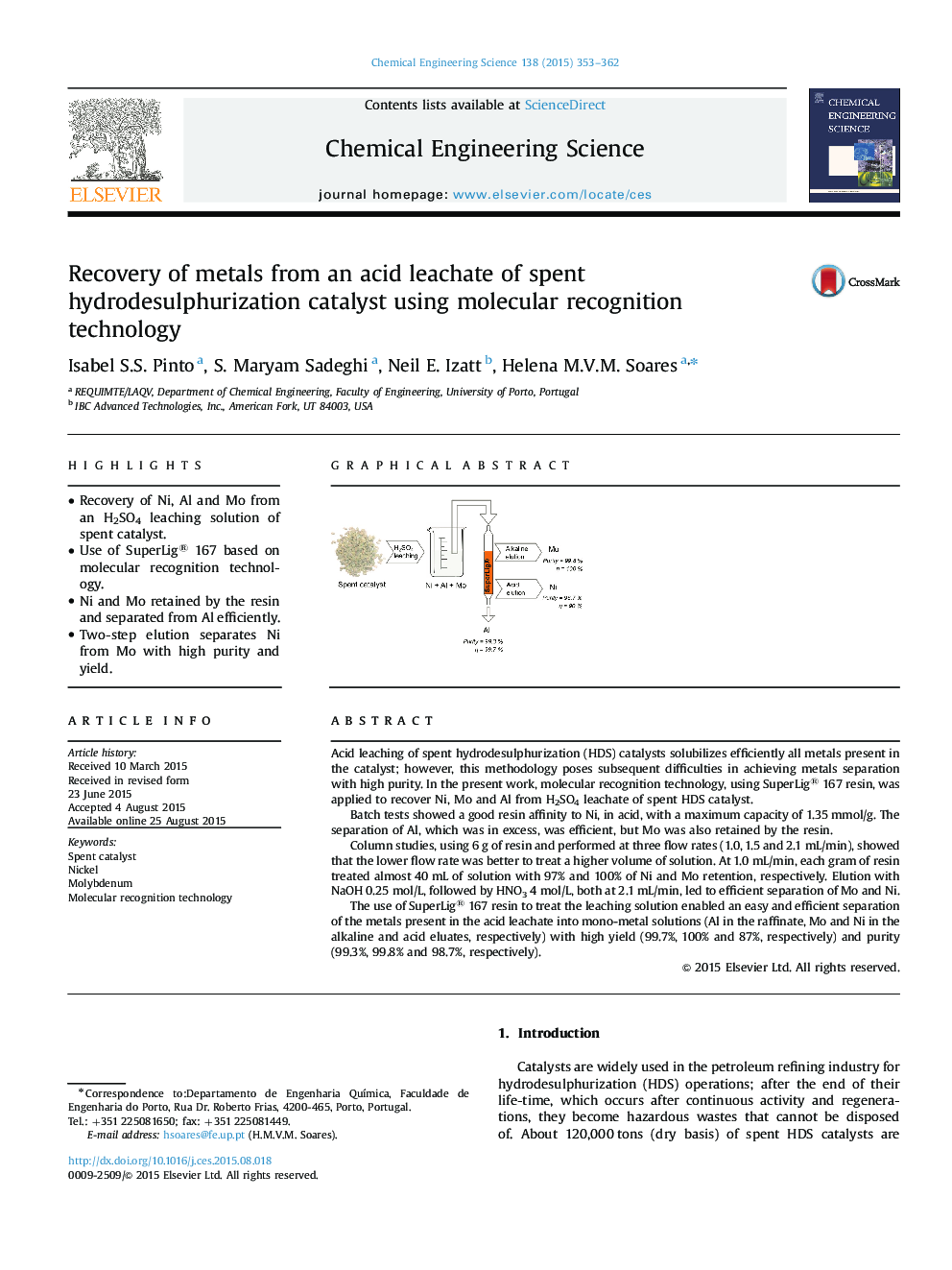| کد مقاله | کد نشریه | سال انتشار | مقاله انگلیسی | نسخه تمام متن |
|---|---|---|---|---|
| 154608 | 456846 | 2015 | 10 صفحه PDF | دانلود رایگان |
• Recovery of Ni, Al and Mo from an H2SO4 leaching solution of spent catalyst.
• Use of SuperLig® 167 based on molecular recognition technology.
• Ni and Mo retained by the resin and separated from Al efficiently.
• Two-step elution separates Ni from Mo with high purity and yield.
Acid leaching of spent hydrodesulphurization (HDS) catalysts solubilizes efficiently all metals present in the catalyst; however, this methodology poses subsequent difficulties in achieving metals separation with high purity. In the present work, molecular recognition technology, using SuperLig® 167 resin, was applied to recover Ni, Mo and Al from H2SO4 leachate of spent HDS catalyst.Batch tests showed a good resin affinity to Ni, in acid, with a maximum capacity of 1.35 mmol/g. The separation of Al, which was in excess, was efficient, but Mo was also retained by the resin.Column studies, using 6 g of resin and performed at three flow rates (1.0, 1.5 and 2.1 mL/min), showed that the lower flow rate was better to treat a higher volume of solution. At 1.0 mL/min, each gram of resin treated almost 40 mL of solution with 97% and 100% of Ni and Mo retention, respectively. Elution with NaOH 0.25 mol/L, followed by HNO3 4 mol/L, both at 2.1 mL/min, led to efficient separation of Mo and Ni.The use of SuperLig® 167 resin to treat the leaching solution enabled an easy and efficient separation of the metals present in the acid leachate into mono-metal solutions (Al in the raffinate, Mo and Ni in the alkaline and acid eluates, respectively) with high yield (99.7%, 100% and 87%, respectively) and purity (99.3%, 99.8% and 98.7%, respectively).
Figure optionsDownload high-quality image (123 K)Download as PowerPoint slide
Journal: Chemical Engineering Science - Volume 138, 22 December 2015, Pages 353–362
